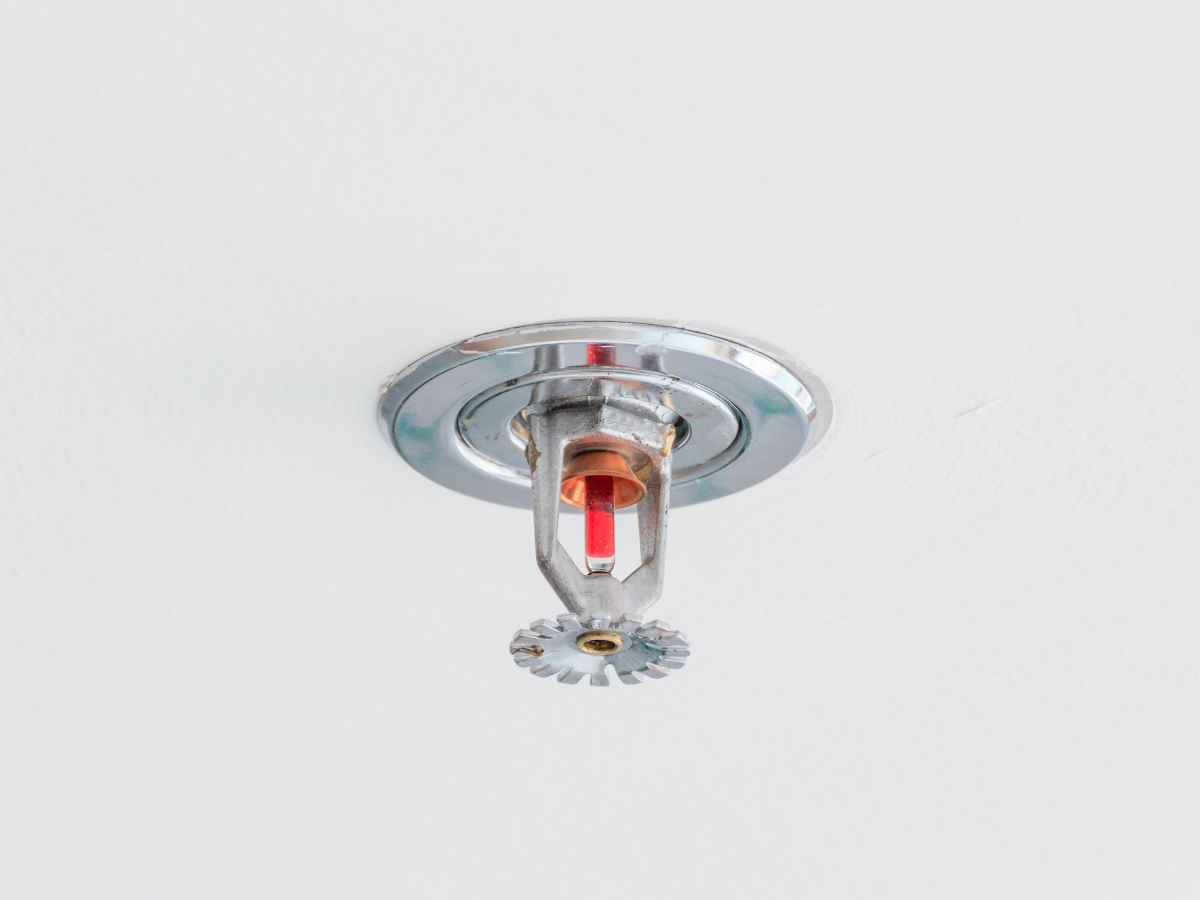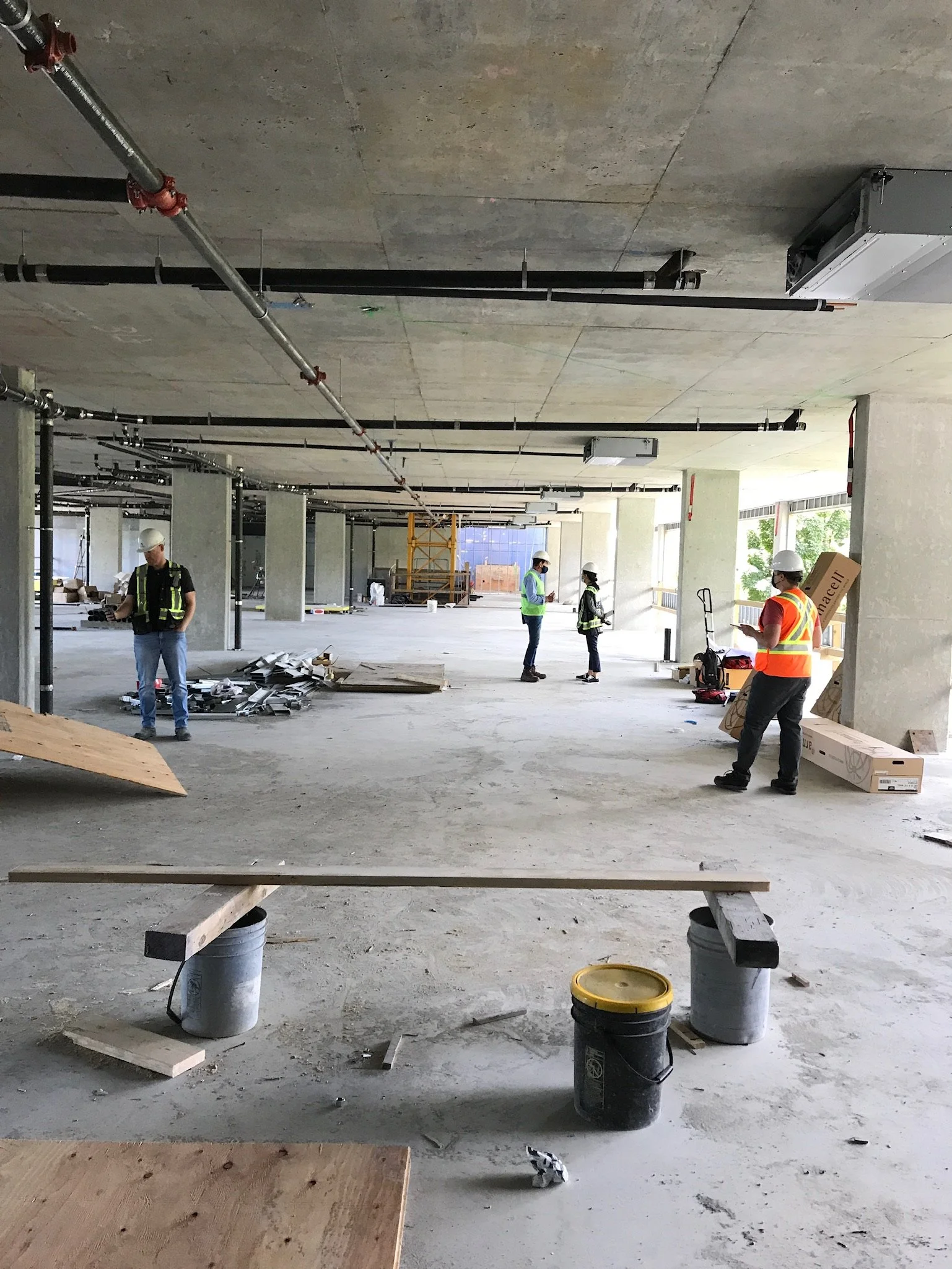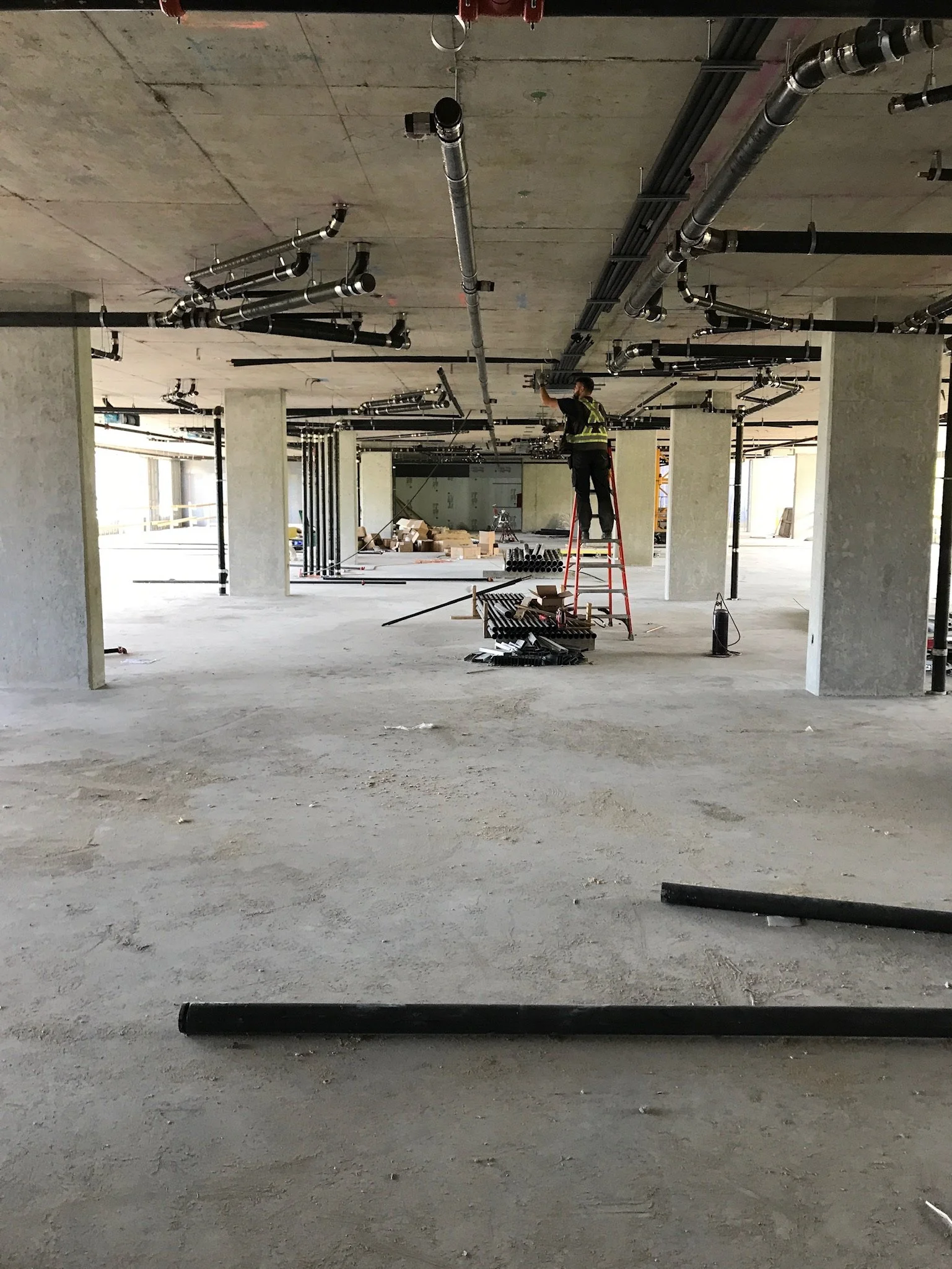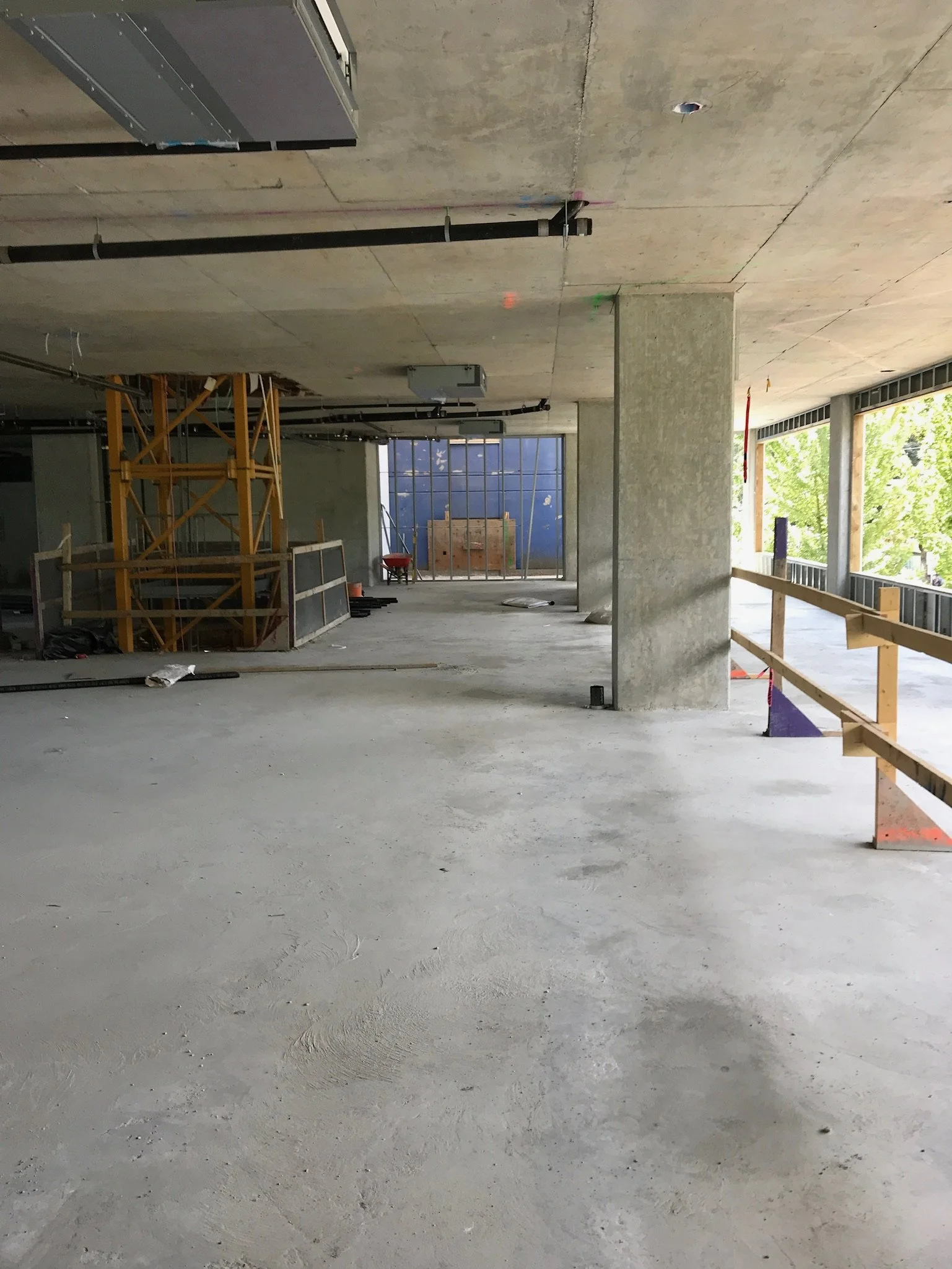Commercial Renovation Design Guide
UPDATED August 15, 2024 | AVERAGE READING TIME: 5-10 minForward
Are you embarking upon a design journey for a new business or enterprise? Or, are you looking at renovating the existing location of your business?
Our Why?
This is an online resource to help entrepreneurs understand their design journey for a commercial project. When it comes to renovating an existing business workspace or developing a new location there might be details you are unfamiliar with. We want to provide helpful insight at the onset of your business venture.
There are assumptions you might have about the building code requirements of your municipality.
We cover the questions businesses need to ask for a successful commercial renovation design project
These insights will help you plan your budget.
You will learn the key factors that affect your timeline for opening your doors to the public.
Start your design journey with your eyes wide open to what your challenges will be with your unique to you business. We know it is exciting to start a business or change an existing space, and we want you to be successful.
Key Points Covered:
Renovating a commercial space is called a Commercial Tenant Improvement (CTI) and is planned by interior designers based upon the municipal jurisdiction your project is based in.
CTI’s can be complicated for business owners, especially when you are busy and have never renovated a commercial space before. Careful planning and creativity can bring value to a renovation of a commercial space for a restaurant, office, store, or medical clinic.
There are many stages to the process. It is important to prepare for the phase where construction happens. This is the most expensive part, and costs can easily add up when mistakes happen.
Renovating a commercial interior like a restaurant is not as easy as it appears on television reality shows. There are a myriad of factors to consider, restrictions to design around, and building elements that can not be changed.
Finally, there are access restrictions, scheduling constraints, and accommodation issues during the renovation to figure out.
Articulated has completed over 400 projects in its history, and that means we have some tips and tricks that every business owner should be aware of before starting. In this article we aim to provide business owners with tips to simplify the design journey and build (or improve) on the viability of a commercial space for commercial interior design in major cities across Canada:
The tips we will cover in this article:
Review your Lease details
Obtain copies of building plans on-file
Compare the existing to plans on-file
Changes to occupancy type
Hire a designer before lease negotiations
Negotiate leasehold improvement allowances
Hold onto that grand opening date;
What are the top 5 things a designer will need to know before they start your project?
Hire an NCIDQ Certified Interior Designer
Your interior designer will need consultants
Involve workers early on in the design process
Changing structure is costly
Be cautious about changing outlets and lighting
Be cautious about changing plumbing fixture locations
Be cautious about altering ventilation
Changing sprinkler locations is costly
Plan in modular units
Cold shell verses warm shell interior
Consider an integrated design approach
Design with accessibility first
Don’t assume a quick turn around
20+ Tips and insights for a Successful Commercial Renovation
Signing your lease and the conditions you are agreeing to are an important part of your journey. You could be making assumptions about the site’s suitability for your business goals that might need further investigation. Each tip listed above will broken down in extensive detail. Understanding these fundamentals will not only simplify your process with us. It will simplify your journey for a successful project for your enterprise.
So dive into our design guide for commercial renovations and get your pencils out!
Tip #01: Lease Negotiations
Request for a copy of their rules on alternations, renovations, relocating plumbing fixtures, and updating electrical and lighting fixtures from the landlord or leasing agent. Each property leasing agent and landlord have different rules around renovating a commercial office or space so it is important to have a conversation with them first about what you can and cannot do with the space. Review it with them and then follow up with your questions regarding any changes you want to make
Tip #02: Obtain copies of building plans on-file
It is important to obtain copies of any previous alterations or plans that are on-file with the Authority Having Jurisdiction (AHJ), such as the Building Planning Department at City Hall. Your interior designer, contractor, Registered Architect and/or Professional Engineers will need to reference them before they can provide any answers to you about when they can start work.
Tip #03: Compare the existing to plans on-file
What happens now that you have building plans on-file from the AHJ? It will be very important to determine if there have were any previous structural or non-code compliant changes to the unit that are not on file with your AHJ. There might have be some alterations that have not been done to code or without a building permit. Sometimes you can visually spot this on your own but a qualified designer can assist you as well.
What’s the objective of these first 3 tips?
As the tenant, you should be aware of any details affecting the viability of your project. Further research might be needed to determine if the Building Inspection Officials will require that you address non-code compliant issues as a part of your plan.
Design 101: Building Inspection Officials will determine that your project site is code compliant and deemed safe to open to the public.
Before you apply for your building permit or apply to open your business you should be aware of any of these liabilities that you signed-up for. These can be a valuable part of your negotiations for the lease. We believe you should not incur additional costs fixing a previous tenant’s non compliant issue. Everyone has a budget and timeline, and we respect this which is why we created this evergreen resource about commercial renovations.
This specific insight is about setting up the foundation for your business to succeed, and comes from years of discovery calls with business owners.
The lease details might seem boring compared with branding and menu planning. Yet these details can affect:
What you will require to design the space to legally open to the public?
How long the renovation will take?
The BIG question: Will there will be unexpected COSTS ? We have more $$$ tips coming…
We encourage you to consider these factors as you negotiate with your landlord so that you do not incur unexpected expenses associated with you taking control of the lease.
We have a few more tips below with regards to leases
Tip #04: Changes to occupancy type
Changes to the occupancy type (e.g., mercantile, business, restaurant, etc.) in a Commercial Tenant Improvement require the services of a AIBC Registered Architect (or one registered in your province or territory) but there are many more important factors and codes to research. An occupancy type determines the construction types, means of egress and fire-safety requirements that must be met. Although NCIDQ Certified Interior Designers perform some of these calculations in spaces less than 5,000 square feet, changes to occupancy are outside of our scope because it is legislated at the provincial/territory level.
Tip #05: Hire a designer before lease negotiations
A qualified design professional can guide you in any important questions you might need to ask in your lease negotiations. Their advice might save you time in a variety of ways. They might also have contractors and engineers they can recommend if you do not have them engaged yet. A qualified designer can also assist you in setting a timeline for the design and implementation of the construction.
Tip #06: Negotiate leasehold improvement allowances
While working through the design process with your designer, you will need to explore any building systems and alternations that need to be made in order for your space to be occupiable. This will vary greatly across different type of commercial occupancies, but some considerations include HVAC and fire-safety systems. Submitting a building permit application fora CTI will require that all of these building systems are brought up-to codes. What exists may likely need to change. These expenses may or may not be covered within the terms of your lease agreement (“leasehold improvement”).
Tip #07: Hold onto that grand opening date
What are the top 5 things a designer will need to know before they start your project?
Do you have the engineer(s) you will need for your type of project?
Do you have plans on file with the city?
Do you have a contractor?
Are there any non compliant issues?
What are the conditions of your lease with regards to renovations?
All these factors will affect the schedule and planned grand opening date. It is important to work with the professionals and build a working schedule.
Are their additional factors to consider?
In British Columbia, Part 3, 6, 7, 8 and 10 of the B.C. Building Code applies to the inside of the CRU but also B.C. Fire Code, B.C. Plumbing Code and Canada Electric Code. Additionally, when a commercial space is over 470 square metres (5059 square feet), has had an exterior alteration, or it was previously designed by a Registered Architect, it will also require the services of an AIBC Registered Architect, but again the interior designer can coordinate with them on your behalf.
Tip# 08: Hire an NCIDQ Certified Interior Designer
When starting out on your commercial space renovation it is important to hire a qualified designer who will understand what the needs will be when preparing for a building permit in addition to designing a beautiful environment for your customers. An NCIDQ Certified Interior Designer will have been tested in all the factors that apply to your type of commercial tenant improvement. Articulated is known for our high quality construction drawings that meet your municipal building code, colourful styles, and how we work together with our clients and their chosen contractors across Canada in an integrated design approach.
Tip #09: Your interior designer will need consultants
A CTI will need a team of consultants, in addition to the interior designer, and this will come at an additional cost you may not have prepared for. When it comes to renovating an interior of a commercial space or office, the most common consultants are Mechanical engineers (heating, aircon, ventilation, electrical, plumbing), Fire-safety specialists (sprinklers, smoke detectors, etc.), Internet technology (IT) specialists (servers, data centers, WiFi, telephone communications, etc.) and Hazardous material contractors (particularly asbestos and lead, but there are other toxins) Our role as the interior designer is to coordinate with these consultants on your behalf and ensure that the finished interior space will be safe and healthy.
Tip #10: Involve workers early on in the design process
Workers hold a unique set of rights in Canadian workplaces and it is important to understand what their pain-points are with the building systems, layout, and team organization. You do not need to solve every design problems because this is something we will help you with, but gathering the information and feedback is very important. Before starting the conversation, it is important to outline what the goals are so that the workers personal opinions are set aside and instead focus on the needs of the team. When meeting with them, ask your workers about their break-room needs, indoor air quality, view to the outdoors from their workstations, team collaboration areas, and access to support spaces like break-out and coaching rooms, shipping and mail rooms, printers and scanners, and the like.
Some important go / no-go tips on building systems:
Tip #11: Changing structure is costly
Structural changes are not often allowed in a CTI because they affect the building as a whole. Making minor changes interior openings may be permitted if the structure is timber-framed, but the majority of mixed-use and commercial buildings are post-and-slab (or concrete) with steel-stud framing. This means no windows or entry doors can be altered and changes to the location of posts and other building systems will interfere with changes to the space plan. Considering changes to windows, entry doors, or walls between units should be strictly avoided if the project is budget sensitive because there are a variety of building codes that regulate fire and life safety for all occupants in the event of an emergency.
Tip #12: Be cautious about changing outlets and lighting
Making changes to the electrical and lighting in a commercial space during a renovation may be permitted if the structure is timber-framed, however the majority of CRU’s are post-and-slab - or concrete, as already mentioned. This means that electrical conduits are embedded into the concrete slab itself and can not be capped or otherwise terminated. Whatever the electrical supply is providing must be continued. There are times when lighting can be changed, such as wall-sconces or even recessed lighting in a dropped ceiling, but adding more lighting needs to carefully consider the current electrical load capacity and should not exceed what is currently installed. With LED lighting, this is often not an issue but the designer still needs to review and count the electrical load of all fixtures before changes can be considered.
Tip #13. Be cautious about changing plumbing fixture locations
There are some changes that are possible in a commercial unit like changing the sink and faucet in a bathroom or kitchen, changing the style of toilet, etc., but building code will determine the number of required toilets and sinks. This is all based upon a careful calculation of the waste/soil stack in the entire building. The age-old-question of the toilet is whether it can be moved or not. The costs to relocate a toilet in a mixed-use building are very high because they require a Professional Engineer, X-Ray of the slab, and then approvals and likely some compensation provided to the neighbour below for the inconveniences they will suffer. An alternative may be that rather than focusing on moving the toilet, planning a new location for the door may be able to be considered.
Tip #14: Be cautious about altering ventilation
Every interior space must have an exhaust fan (to the outside) and there are no exceptions. When adding a commercial kitchen to a CRU, there are strict rules and guidelines that must be followed - and they are not inexpensive. Moving the kitchen exhaust may be possible but there are many considerations to plan before confirming. An NCIDQ Certified Interior Designer is responsible for setting the minimum indoor air quality standards based upon the business type.
Since the start of the COVID-19 Global Pandemic, additional measures include in-line HEPA filters but also in-duct UVC equipment to reduce the exposure to airborne indoor contaminants that affect workers health.
Tip #15: Changing sprinkler locations is costly
Sprinklers are owned by the building, meaning they are not owned by the tenant. Sprinklers can never be covered, but they may be eliminated or relocated for an additional cost (that it’s not cheap either.) Sprinklers have a purpose and it is an important one that should never be downplayed. They require clearances and are to be free from obstructions. There are times when making changes to the sprinklers have caused floods, fires, and even complex problems when reactivating the sprinkler system. It is best for the business owner to seek the advice of their Strata Council on the rules, or even experiences, prior to starting a renovation.
Some important interior planning factors:
Tip #16: Plan in modular units
Elevators, corners, and hallways are only so big and this means that all materials, finishes, and products have to be carefully considered in modules when planning. For example, a 10-foot long slab of continuous calcutta marble may not be possible because the elevator is 9-feet high or that there is a turn in a corridor making a non-bendable material impossible to transport to the site. It’s a rookie mistake (and a costly one) to not consider the entire route that goods must travel from the truck to the unit well in advance. There are always clever design solutions that can get the business owner the most of what they want.
Tip #17: Cold shell verses warm shell interior
For a space to be a cold shell, it has no furnishings, washrooms, heating, electrical and lighting, or plumbing. Minimal ventilation will be provided because it is required by law, but it will often require an significant investment to meet the needs of the occupants and activities (e.g., adding kitchen exhaust ventilation to a space where it does not currently exist). For a space to be a warm shell, it may have been previously occupied and therefore will have some infrastructure and building systems already in place. These may need to be modified or planned around to avoid budgetary impacts. As you can see, a cold shell will require more financial investment than a warm shell and these are the primary considerations to determine before leasing a space and plotting out a business plan.
Tip #18: Consider an integrated design approach
Involving all the consultants you need to along with your qualified designer at the beginning of your planning for the space can simplify your design. It is an added cost, and can be an investment to have them all at the table together collaborating on your goals. Articulated is known for how we work together with our clients and their chosen contractors across Canada in an integrated design approach.
Tip #19: Design with accessibility first
Be aware of any accessible design requirements that affect your type of commercial enterprise. This might be either a municipal or provincial or federal mandate. For example, in the city of Vancouver all new restaurants that apply to open require a commercial accessible bathroom as well as an accessible point of entry and exit. You are in luck because our Creative Director is a internationally recognised subject matter expert with regards to accessible design. They can design for all municipal building codes across Canada as well as guide you in any questions you might have about accessible design for commercial spaces.
Tip #20: Don’t assume a quick turn around
The schedule of construction work for commercial renovation project can not be confirmed until you have engaged your team and have received an approved building permit application. The timeline for your project will begin to be established when you have engaged:
A qualified designer that understands the municipal building codes, and provincial bylaws that will affect your commercial tenant improvement
Your qualified general contractor
Consultants you need to meet the municipal building bylaws and fire and life safety to open the doors to the public
We’re eager to help you get started!
First and foremost our job is to ask questions, so that we can design something achievable meeting the goals of your business.
There are many aspects to building a business when you renovate a commercial space. Depending upon the type of business there are many ways a qualified designer can provide guidance. Beyond the assumptions upon when a business can start operating, they can improve staff efficiency and end user engagement in both the space plan and finish selections.
Below are images from a 20,000 square foot commercial cold shell tenant improvement in the municipality of New Westminster. This is at the early stages where the building developer has just granted us access to the second floor space with the client. We were onsite confirming the plans on file with the city. The building had yet to pass occupancy for the entire structure. So we are also verifying the contract details before ownership will be transferred to the business who purchased this strata unit. Consulting at this stage of project allows us to verify the site conditions for when construction starts.
How much does it costs to renovate a commercial space?
Cost assumptions for commercial tenant improvements will vary greatly across regions, and particularly across the Lower Mainland of B.C. There are 3 levels of cost assumptions: (1) base level; (2) medium level; and (3) high level. The figures we present below are based upon current market conditions in Vancouver BC, but note that 2020-2022 (and likely beyond) has not been “financially kind” to the interior design & construction industry so costs have indeed risen 10-30%. This is reflected in the figures below.
Base Level
These projects are simple finishes, simple furnishings, and have minimal alterations that focus on function.
$150 to $225 per square foot.
Medium Level
These spaces have changes to lighting and other design features with quality furnishings and decor.
$175 to $350 per square foot.
High Level
These spaces focus on top-quality finishes, furnishings, and design elements focused on connection.
$225 to +$380 per square foot.
The cost assumptions we list above are not absolute but they are some guidelines for entry. The actual costs will vary greatly across regions, market conditions, quality and level of involvement needed from us.
Consult with us before you start
We recommend business owners consult with us before they lease. A valuable service that qualified interior designers provide pertains to pre-design services. These services gather information on your business needs, sector, occupants, workers, and revenue objectives with the exclusive purpose of understanding the size and scope of your design needs, sometimes referred to as a “feasibility study.”
There are a few reasons why this is important:
No one likes to pay for an empty location for a year while the planning and construction is implemented and this will be costly to your community, your customers, and your bottom line.
You don’t want a stop work order to be issued on a project for issues that could have been identified and accomodated in the design phase. Stop work orders are issued to address unnecessary risks and poor judgement decisions that will result in additional delays while work is paused for months at a time, adding costs and possibly incurring fines. To correct a Stop Work Order will require additional professional services and fees that are often more than 20% higher had the business owner performed due diligence.
Pre-design services are programmatic concepts, meaning we do the thinking and analysis of a physical environment before design is considered. So that your budget is accounted for. These six critical areas we can assist with are:
Concepts. Identifies the design problem and the possible avenues of solutions to consider.
Relationships. Identifies the connection of adjacent activity areas and zones, rooms and spaces to each other.
Criteria. Identifies the area needed, public/private, needs, equipment, and considerations of spaces before designing and lists a circulation factor resulting in a total ideal gross floor area required.
Codes. Identifies the building codes, health authority approvals and guidelines that will affect the design of the space.
Fit. Plans preliminary arrangements of groups of activity centres together, such as table arrangements in a restaurant or work desks in a corporate workplace.
Recommendations. A list of recommendations and considerations that guide you on your quest for a commercial space.
We cannot emphasize enough that the careful analysis and interior planning of your commercial space before you even sign a lease is extremely valuable. The costs for this service will range anywhere from $3,000 to $10,000, depending on the complexity and the time involved.
Conclusion
There are a variety of ways working with a qualified designer can provide value to your business. Based upon years of conversations with business owners we created this tip list to address some of the most common assumptions people might make no matter whether it is a restaurant, wellness clinic, dental office, café or retail storefront. Then there are the efficiencies we can provide to the team behind your business and your end user’s experience.
Let’s get started.

































